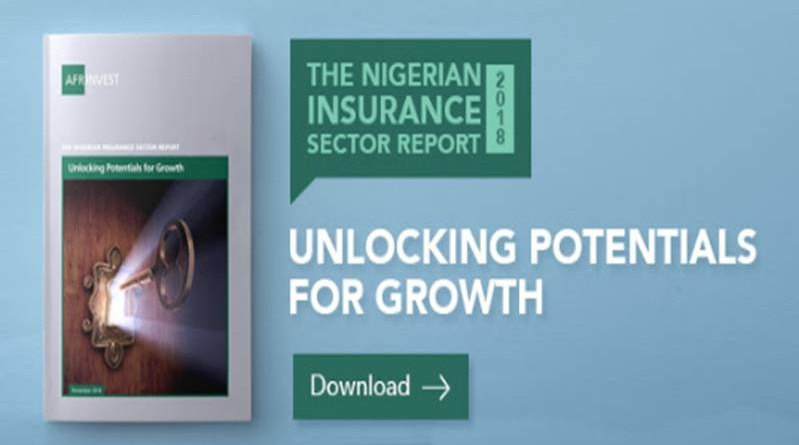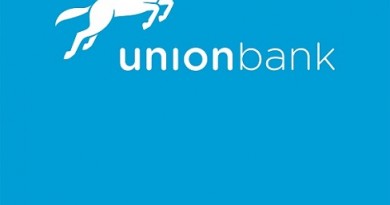The Nigerian Insurance Sector Report : Unlocking Potentials for Growth – Afrinvest
The recovery in the global macroeconomy trickled into the insurance sector in 2017. According to Swiss Re’s (a leading global reinsurance firm) 2017 Review and 2018/19 Outlook Report, global non- life premiums increased moderately, growing by 3.0% in 2017, driven by a 6.0% and 2.0% premium growth in emerging and advanced economies respectively. Similarly, global life insurance grew by 3.0% Y-o-Y in 2017 (vs. 2.0% Y-o-Y in 2016). As expected, emerging economies were the main driver of global growth, with China as the main lead. China accounted for 27.0% of emerging economies’ share of the insurance market and premiums inched 23.0% higher in 2017.
In 2018 and 2019, premiums are forecast to rise 4.0% in each year according to projections by Swiss re. This sustained uptick in premiums is expected to ride on the back of increased premiums in emerging markets where stable economic growth, expanding populations, urbanization and a rising middle class are occurring.
In the same vein, the positive traction the Nigerian economy garnered also reflected on the insurance industry amongst other critical sectors as historical data suggest the industry grows at a faster pace than GDP when the economy expands, due to rising disposable income. Nonetheless, the sector suffered a setback in the last two quarters of 2017, contracting 1.9% and 15.7% in Q3 and Q4 respectively despite growth recorded in the overall economy. It however rebounded in Q1:2018, expanding 18.1% relative to 1.95% growth recorded by the economy as a whole.
Despite growing at a faster pace than the economy, Nigeria’s insurance sector is still one of the most underdeveloped compared to peers. With a population estimated at c.196.1 million people, a growing middle class and increased life expectancy rate for Nigerians (54.5 years average for men and women in 2017 from 53.4 years in 2016), the potential for growth in the sector is significant. At optimal state, industry gross premium should be comparable to overall consumption expenditure in the economy, since insurance is a risk mitigating strategy. However, at 0.3%, Nigeria has the lowest insurance penetration level (measured as insurance gross premium written as a proportion of GDP) amongst notable African countries – South Africa (14.7%), Kenya (2.8%), Angola (0.8%) and Egypt (0.6%). Similarly, the sector’s insurance density (a measure of industry gross premium per capita) is still one of the lowest when compared to peers – South Africa (US$762.5), Egypt (US$22.8), Kenya (US$40.5) Angola (US$30.5) and Nigeria (US$6.2).
The insurance industry in Nigeria is segmented into life, non-life and re-insurance, with non-life insurance accounting for the bulk (48.7%) of total gross premium written (GPW) while life and re-insurance account for 30.1% and 21.2% respectively. Further analysis of insurance market structure shows de-concentration in what fits a monopolistic competitive market structure in both life and non-life insurance while the re-insurance market structure operates in an oligopolistic (duopoly) system.
In analyzing the sector, we identified factors that have the potential to drive or drag growth. Although we highlighted the key role regulation plays in buoying the performance of the industry, we believe increasing population size and growing middle class are factors that support growth while weak underwriting, cultural and religious beliefs, premium leakages, weak mortgage culture and slow pace of adoption & enforcement of compulsory insurance may weigh performance going forward.
Furthermore, we took a closer look at the new risk-based capitalization requirements placed on hold and concluded that the requirements might struggle to drive growth in the sector as it permits fragmentation. We opined that a development similar to the consolidation witnessed in the banking sector in 2005, where minimum capital base was raised from N2.0bn to N25.0bn, is required to strengthen the insurance industry. We recall that during the 2005 Nigerian banking sector consolidation, the number of banks reduced from 86 to 25 which has strengthened the industry to withstand tough economic periods as seen during the recession in 2016.
Despite the underwhelming performance of the sector, we believe huge opportunities abound. In our view, improved capital buffers to increase capacity, innovation in microinsurance to deepen penetration, adoption of bancassurance by players and investment in takaful insurance will drive performance of the industry. To bring our analysis to a conclusion, we highlight a two-pillar requirement we believe is necessary to unlock growth in the industry – higher capital requirement to raise underwriting capacity and regulation to enforce compulsory insurance.
Investment Thesis
After careful analysis, we believe all segments of the sector are viable options for investments as all currently operate at sub-optimal levels. In non-life, it is evident that players are largely undercapitalized to underwrite big ticket transactions in oil & gas, marine and aviation; hence, forfeiting the opportunities in these segments. Whilst we note that the new capital requirements by NAICOM compel companies seeking to play in these segments to raise capital, we believe there will be a need for mergers and acquisitions to strengthen underwriting capacity to adequately capture ‘big ticket’ and profitable transactions.
Furthermore, technological disruption to insurance have begun in advanced climates with the introduction of various platforms such as Auto Claims Direct, E-brokers in the US and Bima operating across Africa and Latin America. Insurance is going digital and technological solutions – insurtechs – with abilities to increase penetration, eliminate brokers or fasten claims verification processes are investment opportunities to position in. Insurance companies or insurtechs with a model to drive insurance operations through mobile technology are positioned to be industry leaders in the near term.
We also believe microinsurance is a sweet spot in the industry as it possesses the ability to deepen penetration and produce positive returns in the mid to long term. Fresh injection of patient capital and a model that encourages the use of mobile technology and unconventional sales channels are likely to produce better results.
Lastly, our analysis show that the sector suffers from poor pricing as the local industry’s price to book at 0.7x is low relative to peers – South Africa (2.9x), Egypt (1.3x) and Ghana (1.3x). Nonetheless, we believe value can be created within the current context while awaiting the necessary reform to drive industry growth.




